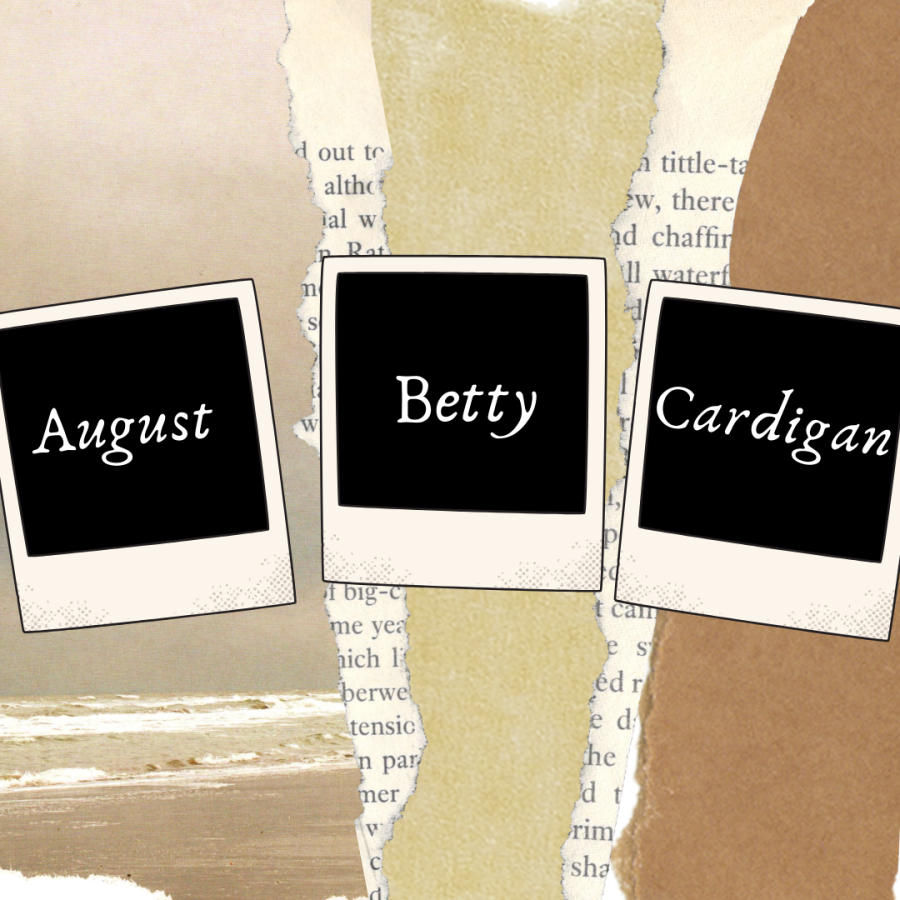Taylor Swift’s Album “Folklore” and the Love Triangle it Contains
February 2, 2023
Most Taylor Swift fans and listeners have a theory on which ex or current boyfriend each song focuses on. Popular hits like “You Belong With Me”, “Love Story”, “22”, “Shake it off” and more could be about many potential aspects of Swift’s life. Swift also tells stories in her songs stemming from her own experiences, such as “Speak Now”, “Right Where you Left Me”, and “The Lucky One”. But with Folklore, Swift’s eighth studio album released July 24, 2020, people have theorized that three songs, Betty, Cardigan, and August, are connected, and all focus on three fictional characters in the same complicated love triangle. This is a new and exciting shift for Taylor Swift’s discography, especially if you were not a fan before. The complexity of the love triangle is a fun and entertaining introduction to Taylor Swift’s music! If you want to find out what this means, be sure to listen to these songs and read below!
Betty
https://www.youtube.com/watch?v=dseXTagDfBo
To start off, this song is the most straight-forward with the love triangle theory. The three names in the song are Betty, Inez, and James (a nod towards Blake Lively’s children), but the love triangle is about Betty, James, and “August,” or “Augustine.” Betty is told from the perspective of James, her potential ex-boyfriend. He is coming back to Betty’s party to try to apologize and win her back after his summer affair with Augustine. In this song, Swift is writing from an apologetic male perspective. It ends with James on Betty’s front porch expressing regret but the listener does not hear Betty’s reaction clearly. There is a reference to Betty’s cardigan, though: “Standing in your cardigan/Kissin’ in my car again/Stopped at a streetlight/You know I miss you” (Swift).
Cardigan
https://www.youtube.com/watch?v=jxzSMm8qq28
If it was not obvious, Cardigan is told from Betty’s perspective. In Betty, the lyric “I was walking home/On broken cobblestones” can be connected to a Cardigan lyric: “Vintage tee/Brand new phone/High heels on cobblestones.” Swift has said in an interview that Cardigan was inspired by “a cardigan that still bears the scent of loss 20 years later,” which can let us assume that Betty centers around Betty (a cardigan owning girl whose boyfriend cheated on her) thinking back on the time her boyfriend had an affair, 20 years in the future. Betty mentions multiple times in the song that she knew “[James would] come back to [her]” once “the thrill [with Augustine] expired.” It is also important to note that James’s gender is not mentioned in Betty, but one can assume it is about him from the lyrics in Cardigan: “Peter losing Wendy/I knew you/Leaving like a father.” One can infer from the song that Betty moved on from James, and left him in the dust.
August
https://www.youtube.com/watch?v=pc_2ZKB4LVc
The final song in Swift’s little triptych is August, about none other than Augustine, the girl who was the star of James’s summer affair . This is told by Augustine herself, also known as “the other woman.” Fans can infer that this is related to the previous two songs from a few well thought out hints. Augustine refers to something that was “never mine,” which seems like James’s undivided love. In Betty, James expresses that the affair “was just a summer thing,” and in August, Augustine tells us “so much for summer love and saying ‘us.’” August also feels like a song that could be told in the future from a person who is reminiscing about her teenage romance, just as Betty was told from the future.
The love triangle also makes sure to keep the romances in high school, as one can assume everyone ended up going in their own directions. All in all, Swift even says in her album introduction that folklore is something to be “passed down and whispered around.” Listening to the story through song does not tire, and at the end of the day, this is just a very complicated and universal interpretation.


















